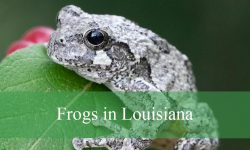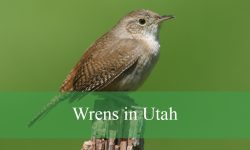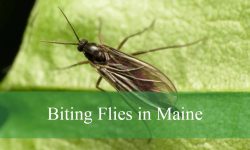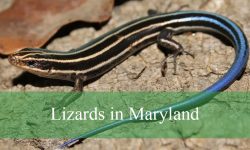Watching hummingbirds in Connecticut is a magical experience that many bird lovers look forward to each spring and summer. These tiny, jewel-like creatures bring flashes of color and energy as they hover among flowers and dart between feeders. For many, their arrival signals the return of warmer days and the beauty of nature at its finest.
While the Ruby-throated Hummingbird is the most common and the only breeder in the state, several rare species occasionally make surprise appearances. Spotting one of these unexpected visitors is a thrilling moment for birdwatchers, especially when a flash of rufous or violet breaks the usual pattern. Every sighting feels like a personal discovery.
Exploring Connecticut’s gardens, meadows, and quiet backyards gives bird enthusiasts the chance to witness both the familiar and the extraordinary. With patience and the right setup, you may find yourself face-to-face with one of these remarkable hummingbirds. Each encounter leaves a lasting impression, making hummingbird watching one of the most rewarding outdoor experiences in the region.
Types of Hummingbirds Found in Connecticut
Ruby-throated Hummingbird (Archilochus colubris)

The Ruby-throated Hummingbird is the only hummingbird that breeds in Connecticut and throughout most of the eastern United States. Males are instantly recognizable by their shimmering ruby-red throat patch, contrasted with iridescent green plumage on their back and a whitish belly. Females lack the red throat, displaying a more subdued appearance with greenish upperparts and pale underparts, making them harder to identify at a distance. Despite their small size, these hummingbirds are highly energetic and spend much of the day feeding on nectar and insects.
They are migratory birds, arriving in Connecticut around late April or May after traveling thousands of miles from their wintering grounds in Central America. Their migration is remarkable, with some individuals flying nonstop across the Gulf of Mexico. Once they arrive, they establish territories around nectar-rich flowers and feeders. Their presence is strongly tied to seasonal blooming patterns, and gardeners who maintain hummingbird-friendly plants often enjoy regular visits.
In terms of behavior, Ruby-throated Hummingbirds are known for their agility in flight, capable of hovering, flying backward, and darting swiftly between flowers. Males often perform dramatic aerial displays to court females, diving in U-shaped patterns while producing a buzzing sound with their wings. They are also territorial, aggressively defending feeding areas from other hummingbirds and even larger birds.
During nesting season, females take full responsibility for building the nest, incubating eggs, and raising the young. The nest is a tiny, cup-shaped structure made of plant down and spider silk, camouflaged with lichens. They usually raise one to two broods per season before beginning their southward migration in early fall. By September, most Ruby-throated Hummingbirds have left Connecticut, heading back toward warmer climates.
Rufous Hummingbird (Selasphorus rufus)
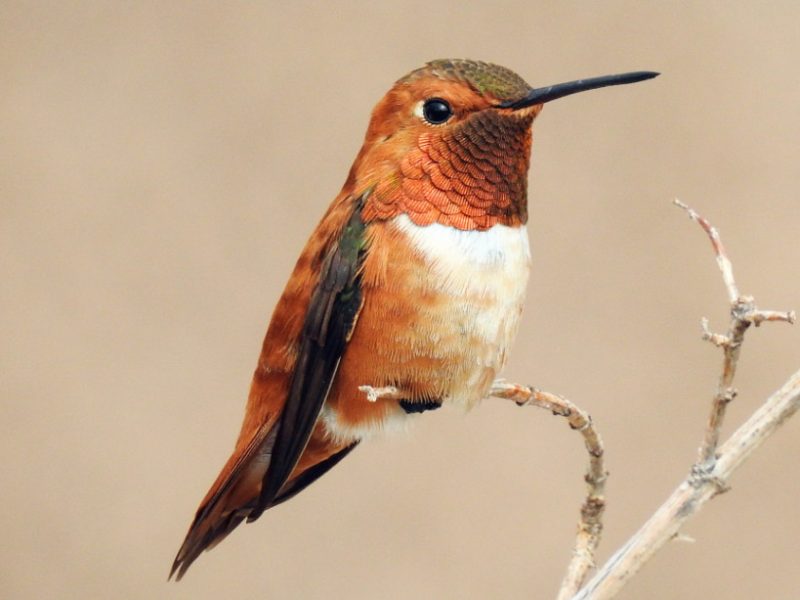
The Rufous Hummingbird is a rare but increasingly recorded visitor in Connecticut. Unlike the Ruby-throated, which is common, the Rufous appears mainly as a vagrant, often during fall migration. Males are striking, with coppery-orange plumage, a reddish throat, and a rufous-colored back and tail. Females and immature birds are more challenging to identify, with green backs and rusty flanks, but they still show more rufous tones than other hummingbirds. Their vibrant colors make them stand out when they do appear in the state.
This species is famous for having one of the longest migration routes of any hummingbird in North America. They breed primarily in the northwestern United States and Canada, then travel all the way to Mexico for winter. Occasionally, individuals stray far off their normal route, which explains their rare appearances in the Northeast, including Connecticut. Birdwatchers are always excited to report sightings, especially in late autumn when these birds are more likely to wander.
Rufous Hummingbirds are known for their bold and aggressive behavior. They readily chase other hummingbirds away from feeders, sometimes even driving off the larger Ruby-throateds. Their pugnacious nature makes them easy to notice when present. They rely heavily on nectar but also consume insects for protein, especially during migration when extra energy is crucial.
In Connecticut, sightings usually occur at backyard feeders that remain stocked late into the season. Because they migrate later than Ruby-throated Hummingbirds, some individuals stop over while moving south. Maintaining clean feeders with fresh nectar into November can increase the chances of hosting one of these rare visitors. Their brief but exciting appearances make them a highlight for local bird enthusiasts.
Black-chinned Hummingbird (Archilochus alexandri)

The Black-chinned Hummingbird is another rare visitor to Connecticut, primarily known from occasional stray records. Males have a distinctive black throat with an iridescent purple band visible under certain lighting, while females resemble Ruby-throated females but lack the red throat. Their relatively plain appearance makes identification more challenging unless seen closely or photographed. The long, straight bill and subtle plumage features help separate them from other hummingbirds.
This species typically breeds in the western United States, ranging from Texas to California, and winters in Mexico. For a hummingbird that normally resides so far from New England, Connecticut sightings are unusual and highly prized by birders. Climate shifts and the growing popularity of backyard feeders may contribute to more records of this species outside its usual range.
Black-chinned Hummingbirds are adaptable and often found in various habitats, from deserts and river valleys in their breeding range to urban gardens. They rely on both wildflowers and artificial feeders for nectar. Despite their small size, they are resilient travelers and can survive long journeys during migration, which sometimes brings them into unexpected territories such as Connecticut.
When they appear in the state, they usually linger at feeders, allowing birders a chance to observe them. Careful identification is necessary, as females closely resemble Ruby-throated Hummingbirds, and only subtle differences confirm their identity. Their rare presence adds excitement to Connecticut’s birdwatching community, proving that even far-ranging hummingbirds can occasionally surprise observers in the Northeast.
Calliope Hummingbird (Selasphorus calliope)
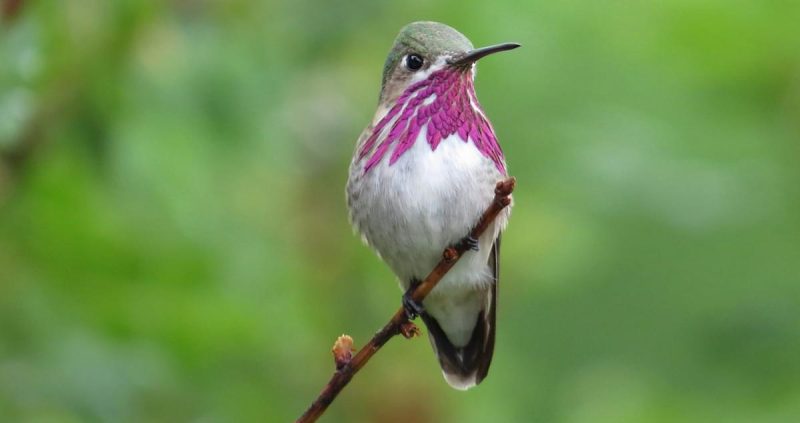
The Calliope Hummingbird holds the title of being the smallest bird native to the United States, measuring only about 3 inches in length. Males are distinguished by their striking magenta streaks that fan outward across their throat, while females are more subdued with greenish backs and pale underparts. Their tiny size and delicate appearance make them particularly enchanting, and spotting one in Connecticut is considered extremely rare. Most sightings occur when individuals stray far from their typical migration paths.
This species normally breeds in the mountainous regions of the northwestern United States and winters in Mexico. Their long migration route is impressive given their diminutive size, with some individuals traveling over 5,000 miles round-trip. Occasionally, vagrant Calliope Hummingbirds venture into the eastern U.S., leading to very occasional Connecticut records. These sightings tend to be isolated and often occur during the fall months.
In terms of behavior, Calliope Hummingbirds are active and territorial despite their tiny stature. Males perform dramatic flight displays during courtship, hovering high above before diving down in a U-shaped pattern. They primarily feed on nectar but also consume small insects, which provide essential protein for their long migrations. Their ability to survive harsh environments and long-distance flights speaks to their resilience.
When they appear in Connecticut, they are usually seen at well-maintained feeders or in gardens rich in tubular flowers. Because of their rarity, birders often rush to documented locations to catch a glimpse. Their presence highlights how unpredictable hummingbird migration can be and adds an element of surprise to birdwatching in the region.
Broad-billed Hummingbird (Cynanthus latirostris)
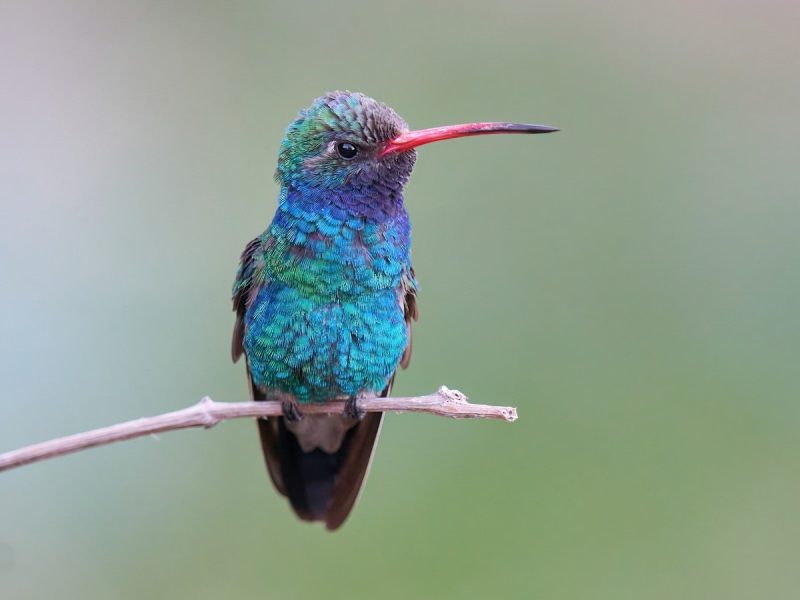
The Broad-billed Hummingbird is a striking species most easily recognized by its vibrant colors and distinctive red bill tipped with black. Males display glittering blue-green plumage across the head and chest, while females are more muted with grayish underparts and greenish backs. Unlike the Ruby-throated Hummingbird, which is common in Connecticut, the Broad-billed is an accidental visitor, making any sighting an extraordinary event for local birdwatchers.
This species is native to Mexico and the southwestern United States, where it thrives in desert scrub, canyons, and riparian habitats. It is highly unusual for them to appear in New England, but records do exist of individual Broad-billeds straying far from their range. Such vagrancy often occurs in late summer or fall when young birds disperse widely.
Broad-billed Hummingbirds feed on nectar from brightly colored flowers and are also frequent visitors to backyard feeders in their usual range. They are agile fliers, able to hover and maneuver effortlessly while feeding. Though small, they display a feisty nature and will defend feeding territories against other hummingbirds.
In Connecticut, they are considered exceptional rarities. Observers need to rely on their bold plumage and red bill to differentiate them from other species. A confirmed sighting of a Broad-billed is usually reported quickly within the birding community, drawing enthusiasts from surrounding areas to witness the unusual visitor.
Mexican Violetear (Colibri thalassinus)
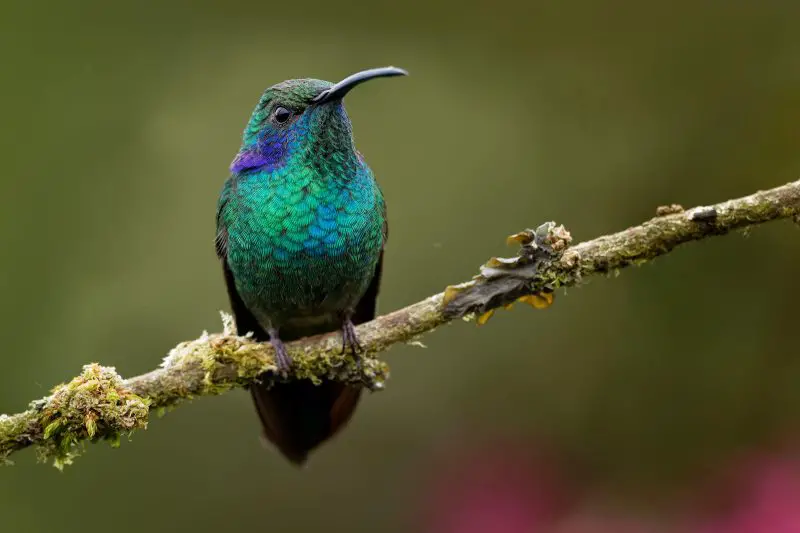
The Mexican Violetear is one of the most spectacular hummingbirds that could appear in Connecticut, though it is an extremely rare visitor. It is medium-sized compared to other hummingbirds, with dazzling green plumage and a distinctive violet patch on the sides of its head and chest. Its shimmering appearance sets it apart from the smaller and subtler species more commonly seen in the Northeast. Spotting a Mexican Violetear in the state is a remarkable experience for birders.
Normally, this hummingbird is found in Central America and parts of northern South America, where it inhabits montane forests and open woodland edges. Occasionally, individuals wander far north into the United States. In rare instances, they have reached the eastern U.S., including Connecticut, though such appearances are exceptional and unpredictable.
Mexican Violetears are active and often noisy, frequently singing from exposed perches between bouts of feeding. They consume nectar from a wide variety of flowers and also supplement their diet with small insects. Their strong flight abilities allow them to cover long distances, which explains how they sometimes end up far outside their typical range.
In Connecticut, sightings are few and far between, but they generate considerable excitement within the birding community. Their iridescent colors and unusual size make them unmistakable, ensuring that any appearance is quickly documented. While not a regular part of the state’s hummingbird population, the Mexican Violetear adds to the list of rare species that highlight the unpredictability of bird migration.
Best Time and Places to See Hummingbirds in Connecticut
The best time to see hummingbirds in Connecticut is during their breeding and migration seasons. Ruby-throated Hummingbirds, the state’s only regular species, typically arrive in late April or early May as flowers begin to bloom and insect populations increase. They remain throughout the summer, nesting and raising young before beginning their southward migration in late August through September. By October, most have departed for Central America.
For those hoping to catch sight of rarer visitors like Rufous, Black-chinned, or Calliope Hummingbirds, late fall is the best chance. These species are usually vagrant birds that appear after the Ruby-throateds have left, often showing up at feeders that remain stocked with nectar into November. Keeping feeders up later than usual increases the likelihood of attracting these unexpected guests.
The best places to see hummingbirds in Connecticut are gardens, meadows, and wooded edges that provide natural nectar sources such as bee balm, trumpet vine, and cardinal flower. Backyard feeders are also excellent attractants, especially if they are filled with a simple sugar-water solution (four parts water to one part white sugar, with no dye added). State parks, wildlife refuges, and botanical gardens also offer reliable opportunities for spotting these tiny birds during migration.
Patience and consistency are key when observing hummingbirds. Regularly maintaining feeders, planting native flowers, and spending quiet time outdoors greatly increase your chances of seeing both the common Ruby-throated and rare visiting species. Whether in your own garden or at a well-known birding hotspot, hummingbird watching in Connecticut can be both rewarding and full of surprises.
FAQs About Hummingbirds in Connecticut
What is the most common hummingbird in Connecticut?
The Ruby-throated Hummingbird is the only species that breeds in Connecticut and is the most frequently observed. All other hummingbird species recorded in the state are rare or accidental visitors.
When do hummingbirds leave Connecticut for migration?
Most Ruby-throated Hummingbirds begin migrating south in September, with some lingering into early October. Rare species such as Rufous Hummingbirds may appear later in the fall, sometimes visiting feeders well into November.
Can I attract hummingbirds to my backyard?
Yes. The best way is by planting nectar-rich flowers like bee balm, trumpet vine, and salvia. You can also provide a feeder filled with a sugar-water solution (four parts water to one part white sugar). Avoid using dyes, as they are unnecessary and may be harmful.
Have other hummingbird species besides Ruby-throated been seen in Connecticut?
Yes. Though uncommon, Rufous, Black-chinned, Calliope, Broad-billed, and Mexican Violetear Hummingbirds have all been documented in the state. These are considered vagrants and are not regular residents.
Do hummingbirds stay in Connecticut all winter?
No. Ruby-throated Hummingbirds migrate to Central America for the winter. Rare individuals of other species may linger late into the season, but it is very unusual for any hummingbird to remain through a Connecticut winter.

